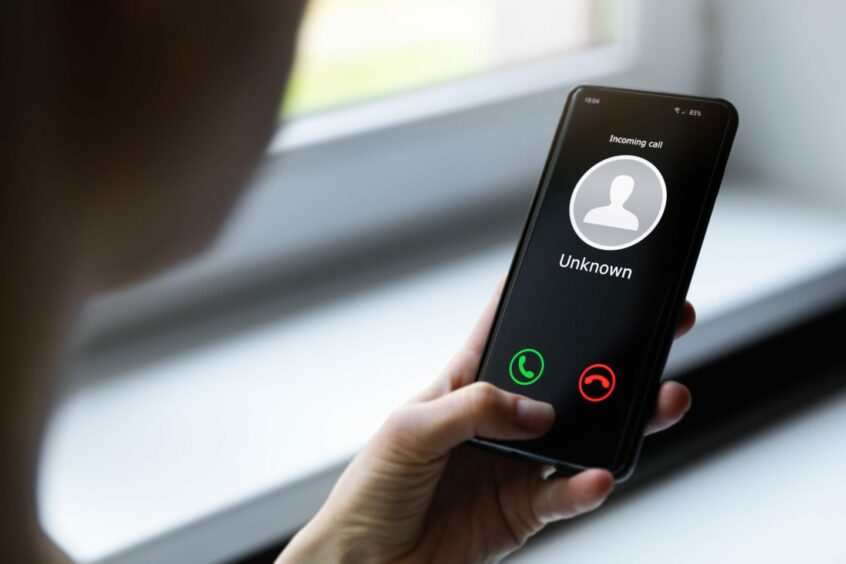People can’t afford to lose money to scams, especially with the cost-of-living crisis. That’s why it’s imperative to know how to identify a scammer. Here are top tips to protect your money and personal details.
-
Some Courier online content is funded by outside parties. The revenue from this helps to sustain our independent news gathering. You will always know if you are reading paid-for material as it will be clearly labelled as “Partnership” on the site and on social media channels,
This can take two different forms.
“Presented by”
This means the content has been paid for and produced by the named advertiser.
“In partnership with”
This means the content has been paid for and approved by the named advertiser but written and edited by our own commercial content team.
Scammers tend to exploit whatever is going on to take advantage of those who are vulnerable. At the moment, that’s the cost-of-living crisis, including soaring energy bills.
This year, over 40 million or more than three quarters of adults in the UK have been targeted by a scammer, according to Citizens Advice’s research. That’s a 14% increase compared to last year.
About 41% of those targeted received messages from someone pretending to be from the government or HMRC. That message could be a text saying the receiver was entitled to a tax refund. That message could’ve contained a link leading to a fake website that looked like the UK government’s.
The Chartered Trading Standards Institute has also warned about a significant increase in energy scams.
All of this means scammers are preying on people who are desperate for money, those waiting for cost-of-living payments, those who can’t afford to lose their hard-earned pounds to scams.
That’s why now, more than ever, it’s important for people to know when someone is trying to steal their money or personal information.
How to identify a scammer: the tell-tale signs
Most scams are online, but scammers can also target people with a text message, a phone call or by post.
To know if the message you received is likely to be a scam, you should ask yourself:
Do I recognise the sender?
Even if you recognise the sender’s name, number or email address, remember that scammers have become so sophisticated that they can make it look like their message is official and legitimate.
Does the message start with a general greeting?
If so, it’s likely to be a scam. Trusted organisations will often use your name for messages.
Is the message asking for personal information?
Scammers don’t always ask for money. Sometimes, they’re looking to get personal details that they can sell. Sometimes they ask for confirmation of your phone number, your address, or your full name. Institutions like the HRMC or banks will never do this.
Does the message have incorrect spellings and grammar errors?
These mistakes are giveaway signs that the message is from a scammer, not a legitimate organisation.
5 Steps to avoid scams:
1. Don’t immediately click on links or open attachments
Doing so may install viruses that can take control of your device and steal your personal information. This is especially true if you don’t know who the sender is or if you don’t trust them. If you want to check your online accounts, open a new tab or window. Type in the address bar to log on to the organisation’s official website. Don’t forward the suspicious text message or email to other people.
2. Protect your personal details
Never give away personal information like login or bank details. Back up all the important files on your device to protect you from scammers who threaten to delete your files if you don’t pay.
3. Use call blockers
These devices enable you to block calls you don’t want. These may already be a part of your phone or something you can attach to it. Check with Trading Standards to see if they may be able to loan you one.
4. Don’t transfer any money unless you’re sure where it’s going
Organisations like HMRC, DVLA and TV Licensing will never message to ask you to transfer money. If someone asks you to carry out a bank transfer during a phone call, close the call and then check for proof that what they’re saying is genuine. Be wary of sellers asking for cash up front as well as lotteries or competitions telling you to pay money.
5. Don’t be pressured to act quickly
If someone uses words that make you panic or feel scared, it’s likely that person is a scammer. The pressure can cause you not to think as clearly as you should.
Remember, anyone can be vulnerable to scams, even those who are smart or experienced with online transactions.
Check ScamAdviser before making any online purchase.
To look at the latest phone, email and online scams affecting Scottish consumers, sign up for the weekly Scam Share bulletin of Trading Standards Scotland.
You can also learn how to protect yourself and your loved ones from scams by joining the Friends Against Scams initiative.
If you’re still unsure about how to identify a scammer or if you would like to report a scam, visit the Advice Direct Scotland website or call on 0808 164 6000. You can also call Police Scotland on 101.











